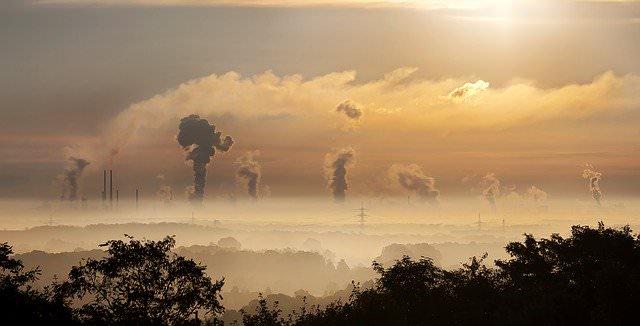Air pollution is a type of change in the chemical, physical and biological aspects of the atmosphere that causes harmful effects on living organisms and human beings. The ultimate result will bring a huge change in the ecosystem or natural surroundings of the earth. The substances that are responsible for causing air pollution are known as air pollutants. The pollutants can be natural or man-made.
Different Types of Air Pollutants
An air pollutant can be defined as the substances that can cause damage to the environment and mankind. Air pollutants can be in the form of liquid droplets, gases or solid particles. Air pollutants can be classified into primary and secondary categories.
Primary pollutants are those substances that are directly emitted from a system. The sources of primary pollutants are volcanic eruption, carbon monoxide gas from the motor vehicles or sulfur dioxide from different factories.

Secondary pollutants are not directly emitted from a process. They react together with the primary pollutants in the air.
Primary Air Pollutants
The different types of primary air pollutants generated due to human activities are:
- Nitrogen Oxides: Nitrogen oxides are produced at high temperatures. Nitrogen Oxides are mainly responsible for acid rain and photochemical smog.
- Carbon Dioxide: It is a greenhouse gas generated due to combustion and is also naturally present in the atmosphere.
- Particulate Matter: Particulate matters are tiny liquid or solid particles that are suspended in the gas. Some particulates exist naturally in the environment from the volcanoes, forest, dust storms, grassland fires, sea spray, and living vegetation. An increasing number of particulate matter in the air can cause health hazards like lung and heart disorders, and lung cancer.
- Ammonia: Ammonia is a compound that originates mainly due to agricultural processes. It is acting as building blocks for the production synthesis of the pharmaceutical companies.
- Sulfur Oxides: Sulfur oxides are originated from volcanoes and in the industrial processes. The combustion of coal and petroleum also led to the generation of this compound. Further oxidation of sulfur oxide forms sulphuric acid that is responsible for acid rain.
- Carbon Monoxide: It is an odorless and colorless poisonous gas. Carbon monoxide is formed due to the combustion of coal, wood or natural gas. Exhaustion from the vehicles is another major source of this gas.
- Volatile Organic Compounds (VOC): Methane and non-methane compounds together form the VOCs. Methane is one of the greenhouse gases that contribute to global warming. Another type of hydrocarbon VOCs also contributes to creating a hole in the ozone layer in the atmosphere. Among the non-methane VOCs, benzene, xylene, and toluene can cause cancer mainly leukemia.
Apart from these, there are other primary air pollutants also that are present in the environment. They are as below.
- Free radicals that are connected with the airborne particles and can lead to cardiopulmonary diseases
- CFCs that are harmful to the ozone layer is mainly emitted from the products that have been banned from daily use
- Odors from the industrial processes, sewage, and garbage
- Radioactive pollutants that originate from war and nuclear explosions, and decay of radioactive radon
Secondary Pollutants
The different types of secondary pollutants that are spreading the air pollution in the world are as follows.
- Ozone is a key component of the Troposphere and stratosphere. Photochemical reactions that are involved in the ozone are responsible for most of the chemical processes that occur in the atmosphere. When the amount of ozone increases mainly due to the combustion of fossil fuels, it becomes smog
- Smog is a type of air pollution and is a combination of smoke and fog. In the past, smog was formed due to the burning of coal in high concentrations in the area. This results in the formation of sulfur dioxide and smoke. But nowadays smog is mainly generated due to industrial and vehicular exhaustion. It then reacts with the primary pollutants in the atmosphere along with sun rays and together forms the photochemical smog.
- PAN or Peroxyacetyl nitrate is another type of secondary pollutant that is formed due to reactions between nitrogen oxide and VOCs.
Conclusion
Therefore we can see that there are mainly two types of pollutants that are causing air pollution on a large scale. But sometimes nature is also hugely responsible for polluting clean air. Air, water and soil pollution have become the most concerned topic around the world.